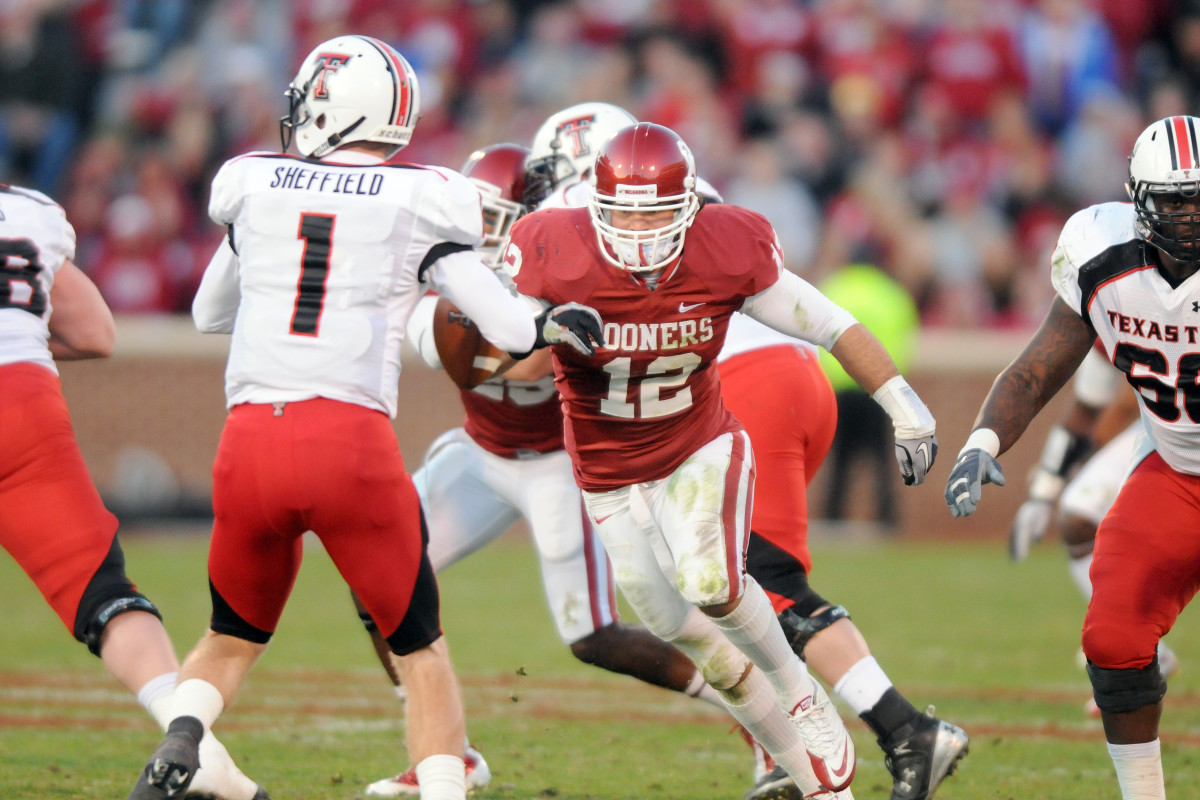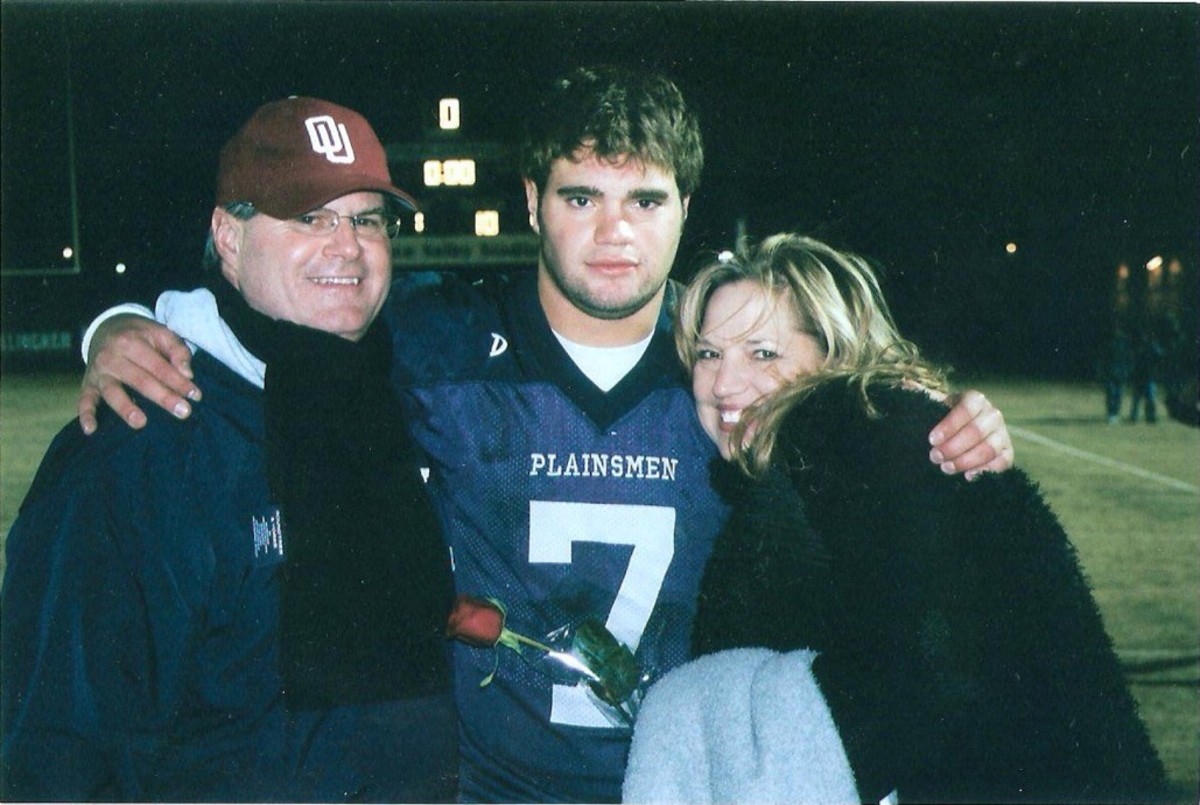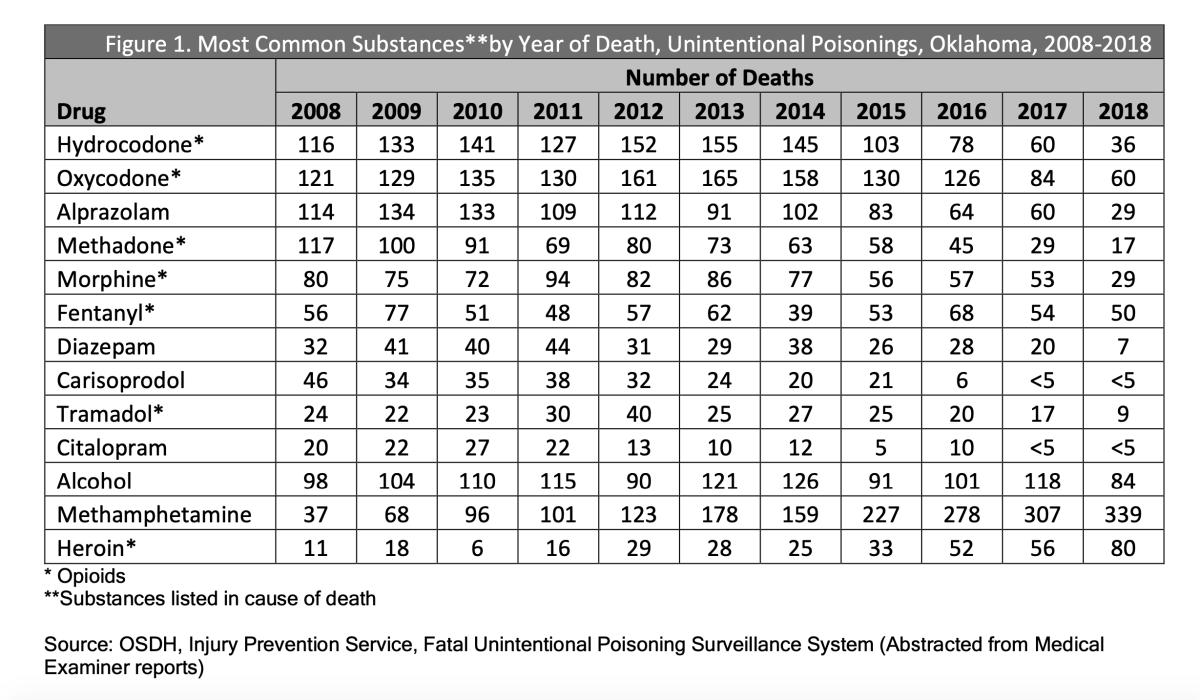10 Years After His Death, Austin Box's Legacy Continues to Make a Difference in Oklahoma
Craig Box’s favorite story about his son doesn’t have much to do with Austin Box being a stud linebacker at the University of Oklahoma.
Well, maybe it does a little.
He chokes up every time he tells it. And he smiles, too.
Ten years after Austin Box tragically died of an unintentional overdose from opioids, his mom and dad are all too happy to keep their son’s legacy alive by telling his story — both the good parts, and the bad.
The good parts inspire others to be better people. The bad parts reveal the insidious nature and inherent dangers of opioid addiction.
One of the best was about junior high basketball. Austin was taller and more athletic than the rest of his eighth-grade team, and when Enid would frequently blow out other teams, instead of retiring to the sideline to let the backups play, the coach would let Austin stay in — just so he could get rebounds under the basket and pass the ball to teammates who otherwise never scored.
“That might be the only two points they ever scored in their whole basketball career,” Craig said, fighting through tears. “He took great joy in seeing those kids that he knew were not athletes but (them) having some success, that made him as happy as anything.”

That was early in his athletic career, but it came to underscore what Austin Box was truly all about: being a great teammate. Whether it was eighth-grade basketball or willing the Plainsmen to the Class 6A State Championship Game as a senior or fighting through one debilitating injury after another to get back on the field with his guys, Box always put the team — and everything that comes with it — ahead of himself.
Craig told SI Sooners that coaches used to tell him they wish they had a team full of Austin Boxes. He was a great player, yes, but also a natural leader, selfless, kind, helpful and had a magnetic, infectious personality.
“Bob Stoops told me one time that, you know, he fought through all those injuries, but whenever he got a chance to play he seemed to make a play and again. … What he could have been if he hadn't suffered all those injuries.”
It was all those injuries — a back injury and a badly dislocated elbow in high school, a knee injury during his redshirt freshman season at OU, another elbow injury a year later, and finally a ruptured disc in his back — that ultimately and somewhat secretly drove him to drugs. His mom, Gail Box, says the earlier injuries were addressed through surgery and physical therapy, but after the disc injury, he received a prescription for painkillers.
And it was those painkillers — five different types, the coroner’s office reported — that caused his death on May 19, 2011, just a week after receiving his diploma.
“Neither Gail nor I had any idea,” Craig said.
“I do speak a lot to schools and parent groups and I’m always asked, you know, (about) the warning signs,” Gail told SI Sooners, “and I wish that I would have had warning signs. Or maybe I did not pick up on warning signs. But, you know, we just did not.”
The family immediately started the Austin Box 12 Foundation. Gail has spoken around the country about the dangers of opioid addiction, joined the Oklahoma Prescription Drug Workgroup in 2012 and formerly sat on the board of the Oklahoma Department of Mental Health and Substance Abuse Services. Craig testified in a multibillion-dollar lawsuit against Johnson & Johnson in 2019.

The Foundation, Craig said, “was a recognition as somewhat of a national crisis that, at the time, was not really understood or known. I think in the last 10 years, the public's come to know what it’s about and the causes of it, and how it’s affected this country.
“But I think the other thing too is, from the standpoint of what we want people to know about Austin.”
Box was an All-State safety and dual-threat quarterback at Enid who grew up loving the Sooners. On National Signing Day, his parents brought to the ceremony a framed photo of 3-year-old Austin at an Easter egg hunt wearing a crimson OU sweatsuit with the Sooner Schooner emblazoned on the front.
As his athletic career progressed, more and more schools became interested. He had scholarship offers from Kansas State, Nebraska, Oklahoma State and Texas Tech, as well as OU, among others. But it was shortly after an offer from Pete Carroll and the USC Trojans that Box suddenly, unexpectedly made up his mind.
Craig said his son seemed to be enjoying the whole recruiting process, but one day decided it had apparently begun to detract from his junior year in baseball.
“He calls me up and he says, ‘Hey dad.’ I said, Yeah?’ He said, ‘I just wanna let you know, I called Coach V — (Brent) Venables — and said I'm going to go University of Oklahoma.’ I just said, ‘What?’
“He goes, ‘Well, I just, I got tired of all this and I thought, well I'll just call him now and tell him. OK, I gotta go, Dad. We’re fixing to warm up for the (baseball) game.’ I mean, it was just like that.”
Craig immediately called his wife.
“I said, ‘You know what Austin just said?’ I said, ‘He just called me and told me he called coach Venables and was going (to OU). And she said, ‘What?’
“We were happy but we were, like, stunned,” Craig said. “It was just, like, out of the blue. He just decided he's kind of tired of it, and it was baseball season, and that's where he wanted to go.”
Craig said “it was his dream to go play there,” and when Austin arrived as a linebacker in the 2007 class, he had been accorded Parade All-American honors, played in the U.S. Army All-American Bowl and had turned down a potential pro baseball career.

He redshirted in 2007, then worked his way into a starting position in 2008 when he got injured in the preseason. Redshirt freshman Travis Lewis became the starting weakside linebacker, and when Ryan Reynolds suffered a season-ending injury in 2008, Box eventually stepped into that spot.
But it seemed every time Box made a move up the depth chart or experienced some high point, he too soon endured another injury.
“You know, he fought and fought to get back,” his dad said, “I think at some point, particularly the last injury, where he hurt his back and he had a ruptured disc in his back, his redshirt junior year, I mean, he fought so hard to get back on the field. And then again, late in the year, he got back on the field, started again, his third year in a row came back from an injury, started and played really well down the stretch.”
In 2010, Box played in nine games and finished with 37 tackles, an interception and a fumble recovery. He started the last five games in the middle in place of Tom Wort and had eight tackles against Oklahoma State and eight more against Connecticut in the Fiesta Bowl.
But the following spring — ahead of his senior season, ahead of his graduation — involved a lot of back pain, a lot of rehab and a lot of painkillers.
“I know when he had his back injury he had a prescription for — I don't remember for sure — oxycodone or something, and he didn't even use it all,” Craig Box said. “And so he was getting it elsewhere on the streets or wherever, for whatever reason … started using that and obviously felt some relief — and was one of those individuals that, as a result of that, finally became addicted.
“But we never saw it, never was aware of it. His older sister Whitney was at OU at the time working on her Master's and she was around him a lot, and she never she never saw it. You know, he probably had a recognition but was ashamed — and obviously hid it from us.”

Statistically, it was the time when opioid overdose deaths in Oklahoma were peaking. After such a beloved and high-profile figure succumbed to addiction and ultimately lost his battle, awareness began to increase about the dangers and suddenness with which lives can be ruined.
Gail said she was glad to be “along for the ride” as opioid deaths began to decline amid heightened awareness, tougher laws, more accountability and greater availability of overdose treatments.
But progress was slow. In 2017, the Oklahoma Commission on Opioid Abuse reported that drug overdose deaths in Oklahoma during the previous 15 years had increased by 91 percent and were still rising, claiming “nearly 1,000 Oklahomans per year to a drug overdose.”
In 2019, Attorney General Mike Hunter commended “decisive action” by the House of Representatives and the Senate for enacting legislation that showed “commitment … to saving lives and putting a stop to the opioid crisis that continues to claim an average of 1,000 Oklahomans every year.
“These bills aim to help those struggling with addiction, give more tools to our law enforcement officials and help prevent the diversion of prescriptions from flooding the market.”
But Gail said early data shows that during the COVID-19 pandemic, Oklahoma opioid deaths were on the rise again.
Clearly, the war wages on. But just like their son did so many times, Craig and Gail will battle their way through whatever setbacks they encounter.
“There's some education now for doctors for the prescribing of opioids, and the medical profession now is very receptive to that,” Gail said. “And also there is a limit to the number of opioids that can be prescribed. And that has helped, I think, with overdoses. And yes, there's always much more to do.
“But, I do think we have made great strides in Oklahoma. … We watch the trends here and there, and are there to talk to legislators or doctors, pharmacists and do whatever we need to do to keep this epidemic at bay.
“We made it our goal with the foundation to make sure that we can — or to try to — save just one life in Austin's name. And hopefully our foundation has done that. But, if not, we are going to keep on trying, as long as we can, to let people know the dangers of prescription opioids.”
